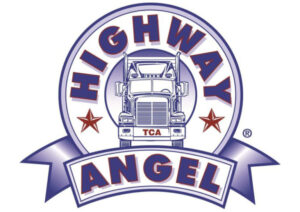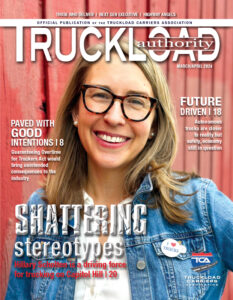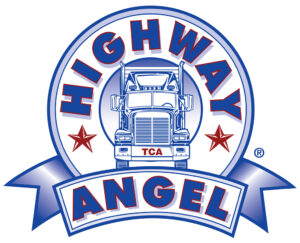The Anatomy of a Hearing: Senate Subcommittee on Transportation and Safety
David Heller
Vice President of Government Affairs, Truckload Carriers Association
The overall theme of the hearing was the safety ramifications of all the topics being discussed in today’s trucking environment. The presentations were really well done; each directly addressed the pertinent topic while giving committee members the opportunity to tell their side of the story. I was especially glad to see the two senators — Deb Fischer, R-Neb., and Tammy Duckworth, D-Ill. — who chaired the committee had done their homework and were well versed on the industry.
There was quite of bit of discussion both for and against proposed changes to the hours of service, and one presenter encouraged senators to pick up the pace in our effort to recognize the positive aspects of hair testing and come forth with proposed federal guidelines for hair testing.
Some carriers are using hair testing in both pre-employment and random screening, and are showing positive results in eliminating drug use from the workforce. Trucking has, and always will, maintain a zero-tolerance policy.
Jake Parnell
Manager, Cattleman’s Livestock Market Livestock Marketing Association
The majority of livestock hauls can be concluded within the timeframe outlined by hours-of-service regulations without significant stops, which limit airflow. However, unfortunately for livestock located in or heading to states outside the center of the country, this is not the case. When drivers “run out of time” while hauling live animals, they are given the grim prospect of unloading the livestock or leaving it on the trailer for a 10-hour stretch.
Unlike the haulers of nonliving products, livestock haulers cannot merely find a safe place to park for their 10-hour rest and leave the cargo on the trailer. Leaving animals on a trailer to suffer from the elements, lack of ventilation, and probable injury is unacceptable. Simply unloading the animals for 10 consecutive hours of rest is also not a good option.
With respect to biosecurity, facility and livestock owners, as well as state and federal animal-health officials, spend significant time creating and following procedures to minimize risk of animal diseases spreading. This includes laws requiring that certain livestock crossing state lines travel with interstate certificates of veterinary inspection that detail where the load came from and where it is going. The trouble with unloading livestock at some waypoint along the trip is that it is almost impossible for drivers to know where they will need to stop in 11 hours with any measure of certainty. These movement documents and the disease-traceability programs associated with them are in place to track and prevent contagious-disease outbreaks in this country. Every time animals in transit are unnecessarily unloaded and penned next to other animals in transit, the risk of disease spreading increases.
Lewie Pugh
Executive Vice President, Owner-Operator Independent Drivers Association (OOIDA)
If you ask most drivers what Congress has done recently to improve their profession, I regret to inform you the answer you’ll hear is “nothing.” In fact, most of our members would tell you that Congress generally enacts laws that not only drive people away from the industry but also decrease highway safety. This isn’t a partisan attack against Republicans or Democrats. Instead, this is an honest reflection of how truckers view the legislative branch as a whole.
Don’t get me wrong. While Washington has contributed its fair share to the dysfunction in trucking, there is plenty of blame to go around. Too many drivers are forced to haul cheap freight; too many motor carriers mistreat and underpay drivers; too many shippers and receivers detain drivers for excessive periods of time; too many safety advocates seek mandates that don’t work; and too many motorists don’t even attempt to operate safely around big trucks.
As Congress considers the next highway bill, there are several ways you can make a positive difference for American truckers. Repeal the failed electronic logging device mandate; repeal the overtime exemption for drivers in the Fair Labor Standards Act; provide dedicated funding for new truck-parking capacity; create a fair process for drivers to appeal inspection violations written in error; and fix the nation’s crumbling infrastructure in an equitable way. Do not mandate speed limiters; do not mandate front and side underride guards; do not mandate higher insurance minimums; do not enact a truck-only vehicle miles-traveled-tax or expand tolling authority; and do not pass the DRIVE-Safe Act.
Tammy Duckworth
D-Ill. Ranking Member, Subcommittee on Transportation and Safety
Our global competitiveness is closely tied to a safe, reliable, and efficient transportation network. The nexus between interstate commerce and commercial trucking clearly demonstrates a close relationship between federal infrastructure investments and our nation’s economic prosperity. Of the 18.6 billion tons of freight goods that were moved across the United States in 2018, 12 billion tons — valued at more than $12 billion — were moved by truck.
Investing in my state’s infrastructure keeps goods flowing through the entire system and delivers a tremendous return on investment for industries and customers in all 50 states.
Yet the most important aspect of any efficient transportation network is safety. Unfortunately, safety remains a work in progress and we have a long way to go. Bottom line is that we can, and we must, do better. Our nation endured 36,560 roadway fatalities in 2018, including 4,951 fatalities involving large trucks. While it is technically accurate that large-truck fatalities declined 69 percent from 1980 to 2017, it is important to recognize that over the last decade, large-truck fatalities have increased by 47 percent.
We need to keep an eye on evolving trends and their impacts on roadway users. And right now, safety trends are a reason for concern. Meanwhile, federal agencies like FMCSA, the National Highway Traffic Safety Administration, and the General Accounting Office are pursuing a number of data-collection efforts, including pilot programs and investigations to analyze the impacts of safety-related trucking initiatives. These agencies, and others like them, should have the opportunity to provide Congress with the technical analysis and stakeholder feedback needed to minimize uncertainty associated with untested initiatives.
Deb Fischer
R-Neb., Chairman Subcommittee on Transportation and Safety
Both by weight and volume, trucks move more freight domestically in the United States than any other form of transportation. This includes first- and last-mile connections, long-haul transportation, and everything in between. The industry is also a major source of employment across our country. The trucking industry is a key component of our transportation network, and it is vital to our economy.
Federal trucking policy has gone through many changes in the past decade, including both changes in the industry and regulatory changes at the Federal Motor Carrier Safety Administration.
Of the many trucking issues I hear about from Nebraskans, hours of service is at the top of the list. The concerns I hear from truckers are consistent. These regulations are inflexible and do not reflect real-world situations. I’m encouraged the FMCSA is taking steps to revise these regulations and that interested stakeholders have made their comments known to the agency.
One group in particular that has faced challenges with the hours-of-service regulations is our livestock haulers. They have the responsibility of moving live, perishable products. Some livestock haulers can find themselves in a regulatory bind between the hours-of-service requirement and animal-welfare laws.
While the hours-of-service regulations have received significant attention, several other regulatory changes that were set to go into effect, including the Entry-Level Driver Training rule and the Drug and Alcohol Clearinghouse, both of which will improve safety have been delayed in part or in whole.
Dawn King
President, Truck Safety Coalition Board Member, Citizens for Reliable and Safe Highways
My father, Bill Badger, was killed on Dec. 23, 2004, just over the Georgia state border, by a tired trucker who fell asleep at the wheel and crashed into his car. At the time of the crash, Dad was on his way to the airport to fly to New Jersey and join me and my siblings for Christmas. The truck driver, who fell asleep and smashed into Dad’s car, said he had been driving all night in order to get to Atlanta by 7 a.m. so he could be assigned to another truck, which was headed to Florida, in order to be with his family for Christmas. In the end, however, neither my family nor his were whole that holiday.
Now is not the time to weaken truck-safety rules and permit special-interest rollbacks of proven safety reforms. FMCSA should abandon efforts to weaken the hours-of-service rules.
One unsafe and unwarranted change would allow drivers to extend by two hours the maximum window during which driving is permitted under the adverse-driving-conditions exemption to the HOS rules.
In the Advanced Notice of Proposed Rulemaking, the FMCSA asserted that this proposed change to the adverse-driving-conditions exemption would not increase driving time or vehicle miles traveled (VMT); thus there would be no safety concern. Yet, this ignores the effect that longer shifts have on injury risks and error rates.
There is compelling research that found lengthening a workday yields an increased injury risk to a worker. One study found that injury risks go up after eight hours on task, with a 30% increase on a 12-hour task. This validates the findings from an earlier major meta-analysis of relative risk of performance lapses over the course of different shift durations that found risk was approximately doubled after 12 hours of work and tripled after 14 hours of work. More recently, a study was performed to identify associated factors with multidimensional driving risks, specifically focusing on fatigue, sleep quality, daytime sleepiness, and health status among Korean occupational drivers. One of the key findings: “those working for longer than 12 hours per day … were a vulnerable group.”
Even if a driver logs the same number of hours on duty or driving, this proposed change would result over a longer elapsed time, which would result in a longer day overall.
Sgt. John Samis
Delaware State Police | President, Commercial Vehicle Safety Alliance (CVSA)
Clear, enforceable rules are the cornerstone of an effective regulatory framework designed to ensure safety on our roadways.
Unfortunately, regulatory activity at the Federal Motor Carrier Safety Administration – one of FMCSA’s basic responsibilities – has come to a near standstill, and the necessary work of maintaining and updating the regulations is suffering. High-profile initiatives, such as implementation of the electronic-logging-device rule, can consume the agency’s resources, especially when those efforts are met with a high volume of exemption requests.
One hours-of-service issue is the “personal conveyance” designation under the hours-of-service rules. To be able to log personal conveyance time as off-duty, drivers must meet several conditions as outlined in the regulatory guidance. These include being relieved of all on-duty activities and responsibilities and ensuring that the off-duty trip is personal in nature.
Under the revised guidance, a driver could, in theory, drive hundreds of miles over the course of several hours, all under the designation of “personal conveyance.” This presents the opportunity for increased driver fatigue and risk on our roadways, as drivers may decide to travel in order to strategically relocate to an alternate location after driving a full day.
CVSA has petitioned the agency to provide a clear, set distance that is permissible under the personal-conveyance designation. In setting clear guidelines on the use of personal conveyance, CVSA recommended that FMCSA look to the standard set in Canada, which allows drivers to use a vehicle for personal conveyance purposes for a maximum of 75 km per day (approximately 46 miles), unladen.
Chris Spear
President and CEO American Trucking Associations (ATA)
An increasing number of motor carriers are conducting pre-employment and random drug tests using drivers’ hair as a testing sample. Hair tests provide a better, longer picture of an applicant’s past drug use and are more difficult than other testing methods to subvert. However, since urine is the only sample type permitted under DOT regulations, companies that voluntarily conduct hair tests must do so in addition to mandatory urine tests. This duplicated time and expense deters fleets from adopting this more effective testing method. To help eliminate this redundancy and incentivize more fleets to conduct hair testing, ATA strongly supports the recognition of hair testing as a federally accepted drug-testing method.
The Substance Abuse and Mental Health Services Administration has long expressed an interest in recognizing hair testing as a federally accepted drug-testing method, and has been developing guidelines to recognize hair testing since the early 2000s. Unfortunately, progress has been inexcusably slow.
The development of standards by Health and Human Services will pave the way for regulated employers to use this testing method and allow them to identify a higher number of safety-sensitive employees who violate both federal drug-testing and medical-qualification regulations. Additionally, having hair testing as a recognized alternative drug-testing method would give motor carriers the ability to report positive hair test results to drivers’ subsequent prospective employers through FMCSA’s now-implemented Commercial Driver’s License Drug and Alcohol Clearinghouse.
ATA urges Congress and this subcommittee to apply further pressure on HHS to pave the way toward adoption of this important safety initiative. Unfortunately, while this country in recent years has seen prescription opioid abuse grow to an epidemic and a correlated uptick of drug-impaired driving, we continue to wait for these critical technical guidelines to be completed so that DOT can recognize the use of hair testing as a federally accepted drug-testing method.
The Truckload Authority News Staff, comprised of award winning journalists and graphic artists, produces content for Truckload Authority, working in cooperation with the Truckload Carriers Association staff. Truckload Authority aims to keep TCA members abreast on the latest trends in the trucking industry as well as articles that feature TCA member executives and drivers. The Truckload Authority staff is based in Little Rock, Arkansas.








